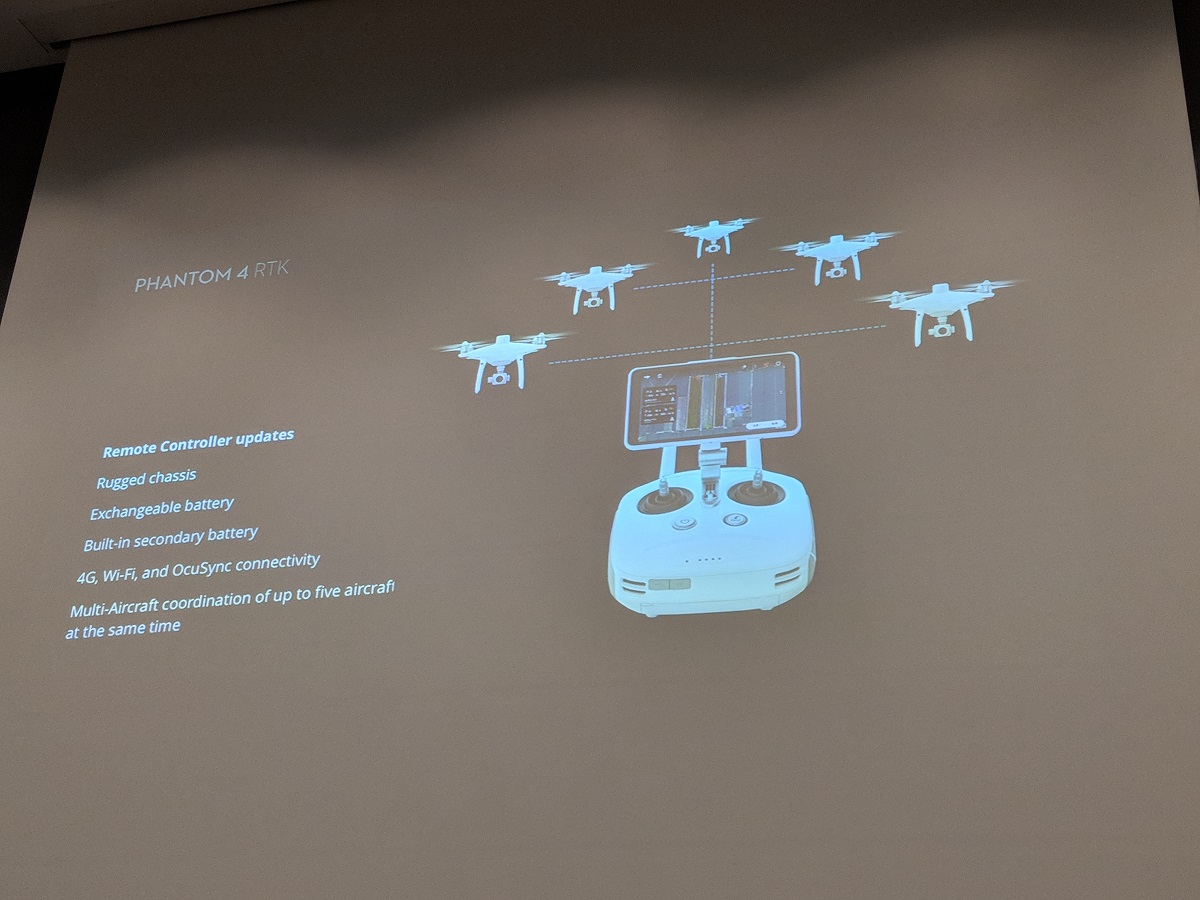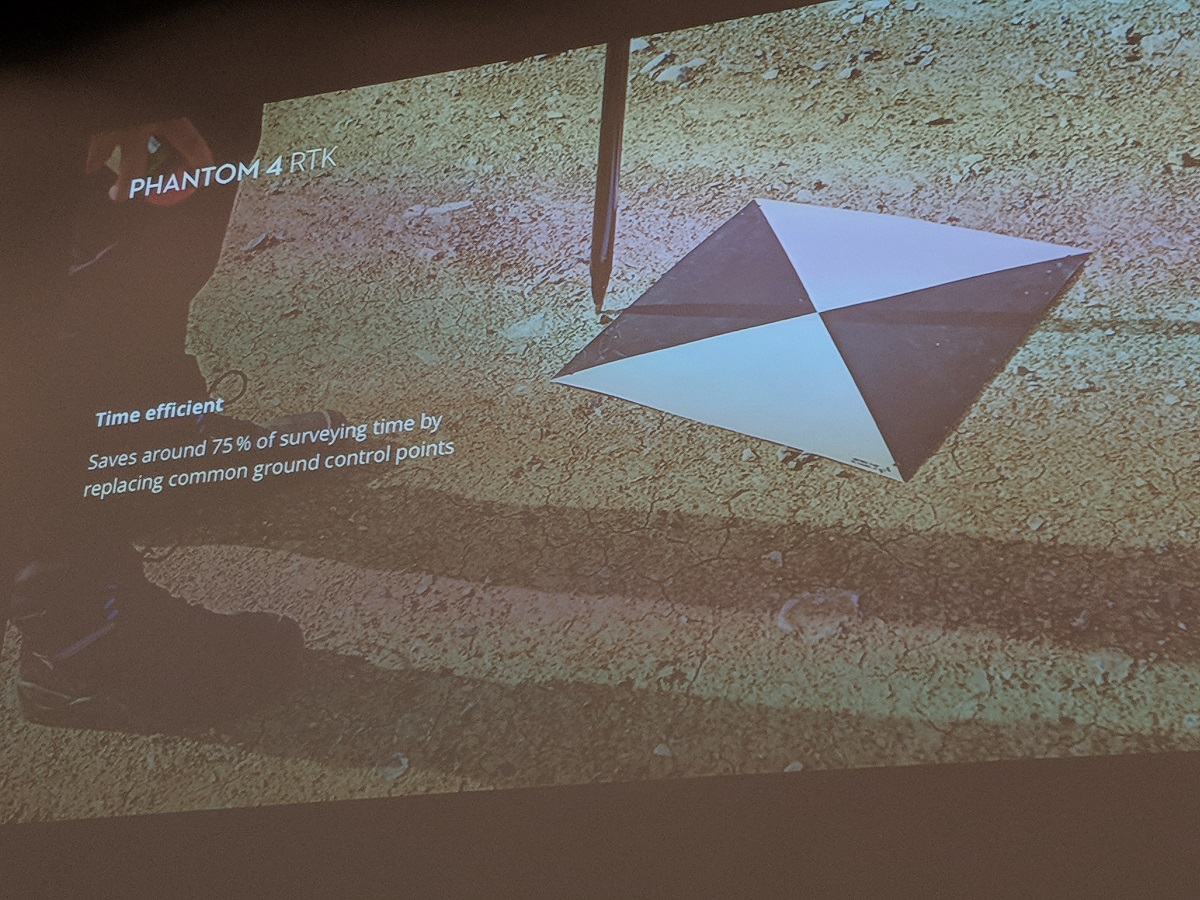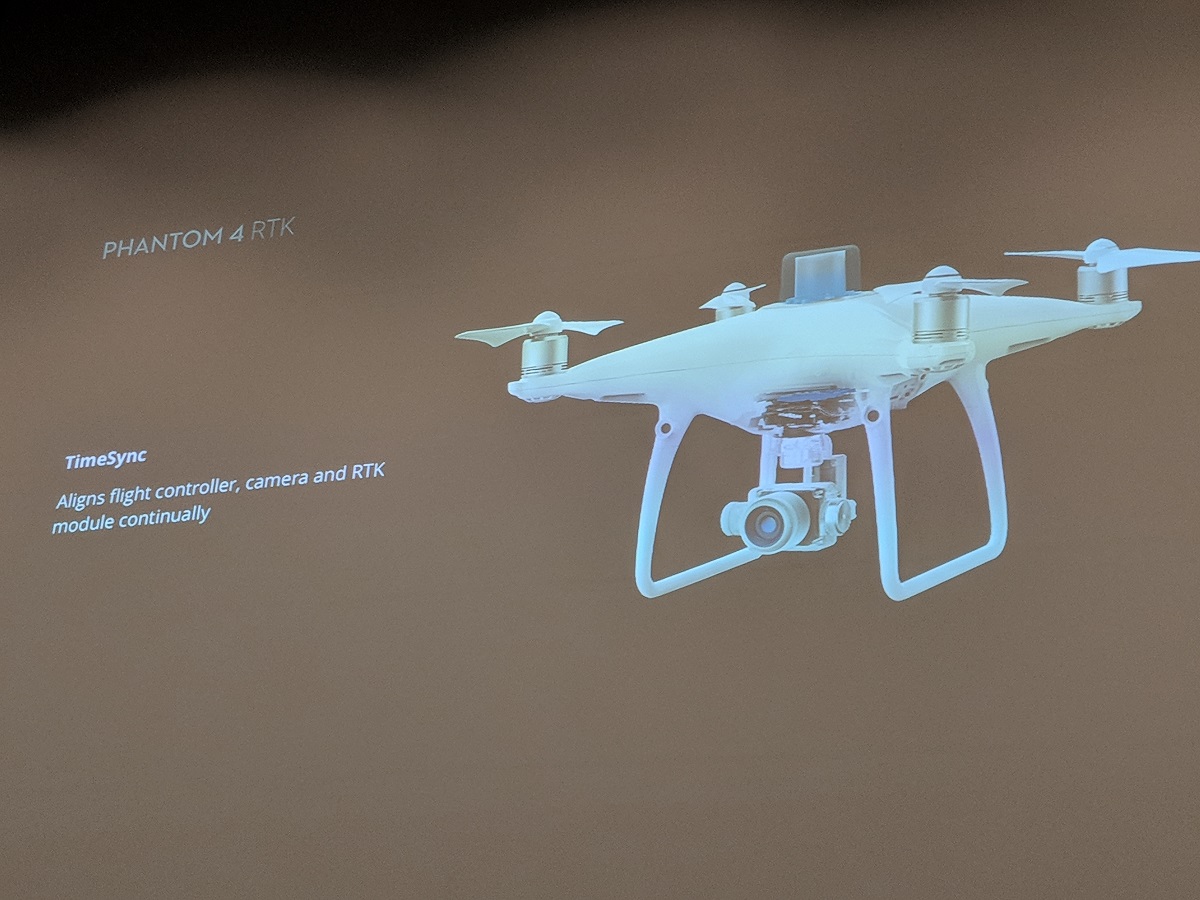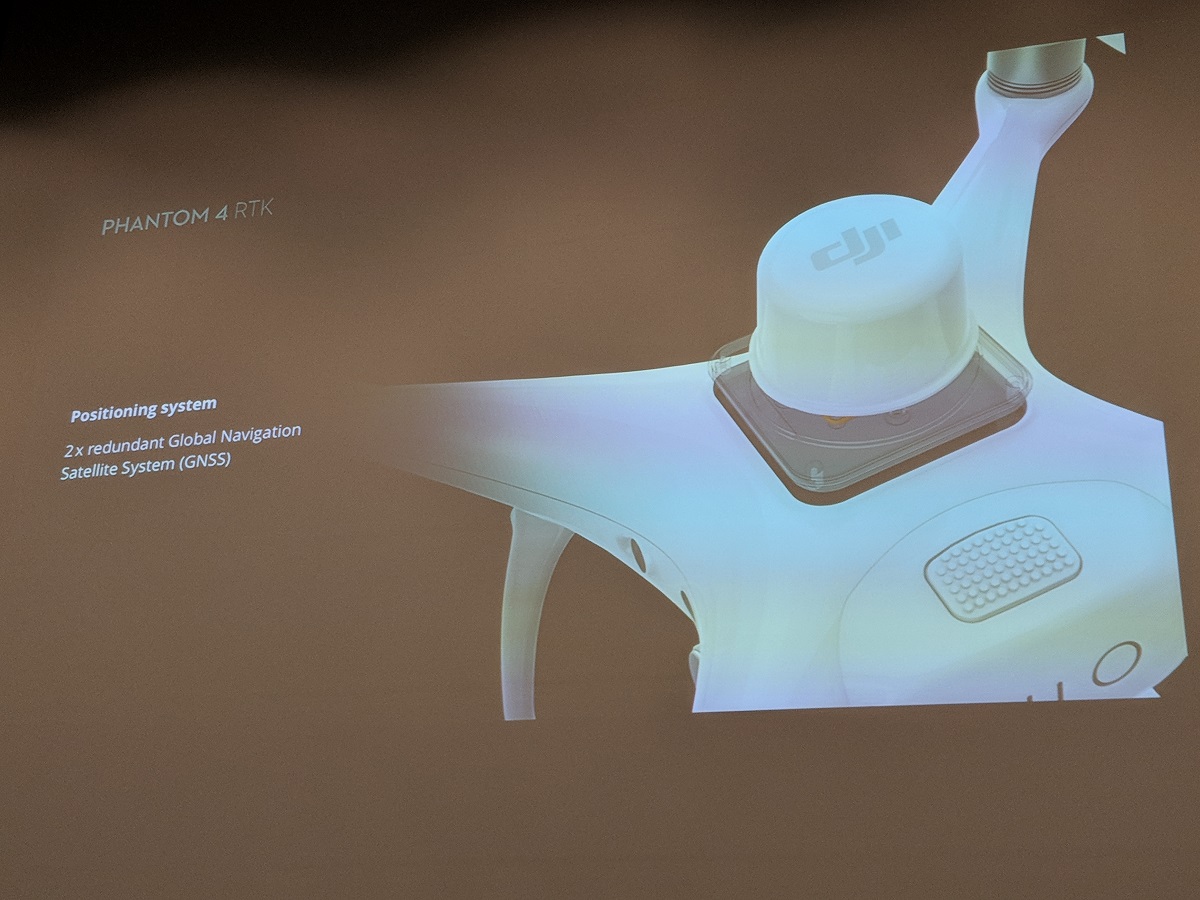DJI launched the
Phantom 4 RTK to great fanfare at the
European Drone Summit, where attendees were able to get a close look at the product and hear about how and where and how it's set to make an impact. Not surprisingly, it's also proven to be a big hit at their INTERGEO booth.
Billed as the ultimate mapping solution, the Phantom 4 RTK boasts a number of features that are set to make it an ideal fit for professionals in a variety of environments. A new RTK module is integrated directly into the Phantom 4 RTK, providing real-time, centimeter-level positioning data for improved absolute accuracy on image metadata. Phantom 4 RTK missions can also be supported with the D-RTK 2 Mobile Station to provide real-time differential data. The system is designed to ensure users can gain centimeter-level accurate data in any condition.
Additionally, a new GS RTK app allows pilots to intelligently control their Phantom 4 RTK, with two planning modes – Photogrammetry and Waypoint Flight – alongside a more traditional flight mode. The planning modes let pilots select the drone’s flight path while adjusting overlap rate, altitude, speed, camera parameters and more, offering an automated mapping or inspection workflow.
Many professionals have been able to
utilize products from DJI in commercial applications to make a real difference, and those differences are about everything from saving time and money to making a measurable impact on safety considerations. The Phantom 4 RTK should allow those same professionals to take these efficiencies to a whole new level, while also opening up new opportunities for these users and other professionals who didn't view the Phantom as a fit for their workflows.
The Phantom 4 RTK is available for order through official DJI Dealers. Shipping starts this month, with pricing options for the Phantom 4 RTK and D-RTK 2 Mobile Station separately or as a bundle. You can check out some images from the press event below to get a better sense of the advantages of the Phantom 4 RTK, but you can also head over to DroneLife to read Miriam McNabb's
excellent analysis of the product.














Comments